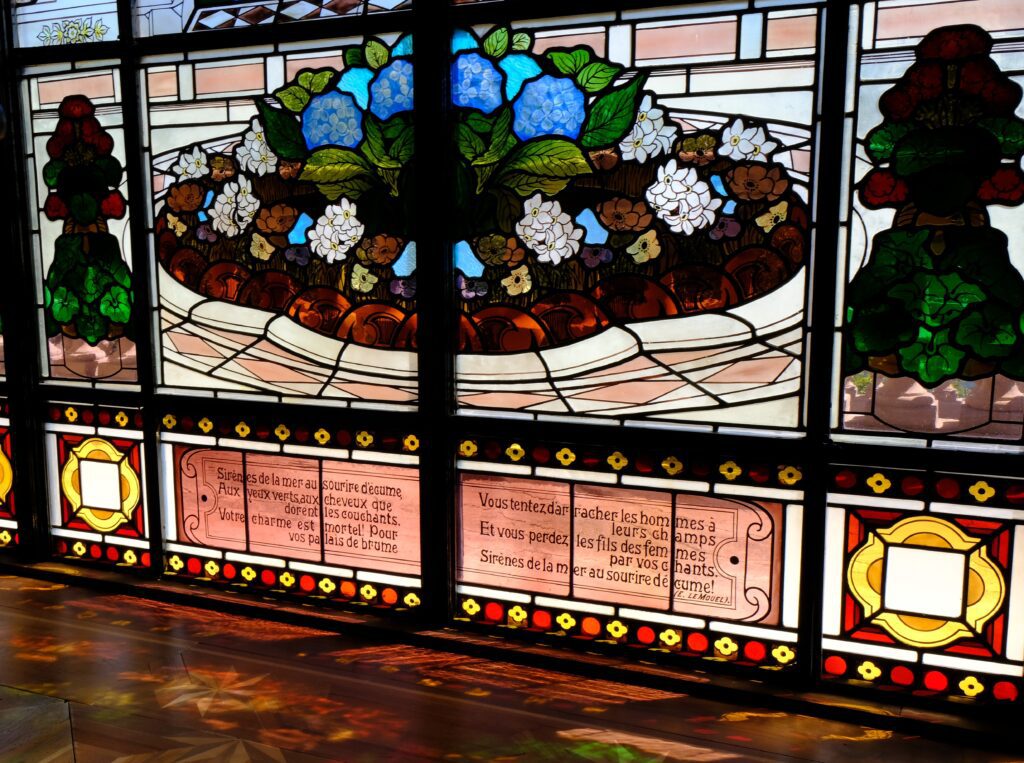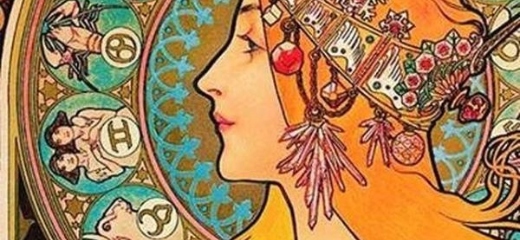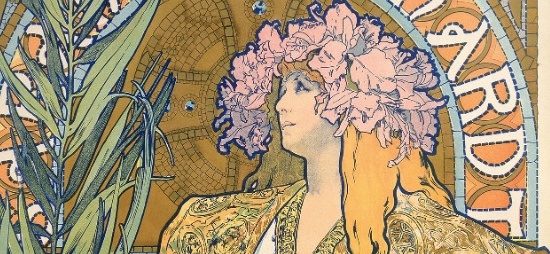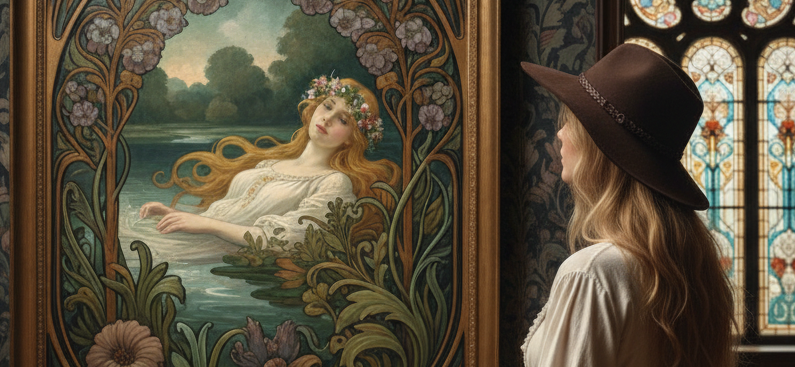In the quiet, sun-baked streets of Agde, a small town nestled in the south of France, there stands a castle that seems to exist outside of time. Château Laurens is not the kind of castle one might expect—no drawbridges, no armored knights, no medieval battles etched into its walls. Instead, it is a place where the boundaries between art, nature, and the metaphysical dissolve into something almost dreamlike. To step inside is to enter the mind of a man who, over a century ago, sought to create not just a home, but a living, breathing manifestation of his soul. That man was Emmanuel Laurens, and his story is as extraordinary as the castle he left behind.
The tale begins not in Agde, but in the grand salons of Paris and the cobbled streets of Brussels, where Baron Eugène de Fontenay, a man of considerable wealth and even greater complexities, lived out his final years. Born in Brussels in 1855, the Baron was a figure of aristocratic standing, but his life was marked by personal turmoil. His wife, Alexandrine, had passed away in 1892, leaving him adrift in a world where his own children had become estranged. Yet, amid this isolation, he maintained a close bond with his cousin, Agnès Laurens, and her son, Emmanuel—a young man whose life was about to take a dramatic turn. When the Baron died in Paris in 1896, he left behind a fortune that would change everything for the Laurens family.
Emmanuel Laurens was just twenty-four years old in 1897 when he inherited the Baron’s colossal wealth. At the time, he was a medical student at the University of Montpellier, a path that seemed predestined for a young man of his background. But the sudden inheritance gave him the freedom to abandon his studies and pursue a life less ordinary. He began to travel, collecting art and objects that spoke to his burgeoning aesthetic sensibilities. Then his father, Saint-Etienne Laurens, also passed away, pulling Emmanuel back to Agde. It was here, in the family home, that he made a decision that would cement his legacy: he would transform the modest residence into a castle—a place where his imagination could run wild.
By 1898, the old Laurens home had begun its metamorphosis. The exterior of Château Laurens took on a composite appearance, a patchwork of architectural influences that defied easy categorization. But it was the interior where Emmanuel’s vision truly came to life. Inspired by the Art Nouveau movement sweeping across Europe, he filled the spaces with organic forms, intricate motifs, and a deep reverence for nature. The décor was a symphony of influences—Greek and Roman antiquities rubbed shoulders with Oriental flourishes, while the feminine form was celebrated in every curve and line. It was as if Emmanuel sought to capture the very essence of the world around him, distilling it into a physical space that was both a sanctuary and a statement.
What makes Château Laurens so fascinating is that it was not simply the work of architects or artisans, though they played their part. Emmanuel was its mastermind, its dreamer, and its builder. He collaborated with engineers and craftsmen, but the soul of the château was unmistakably his. He wanted his home to reflect his spirit, to be a place where the tangible and the intangible could coexist. For Emmanuel, this was more than a building project; it was a metaphysical adventure, a quest to create a space where the seen and the unseen could converge. When the construction was finally completed in 1901, the result was a home unlike any other—a place where every detail seemed to whisper secrets to those who dared to listen.
Château Laurens is more than just an architectural curiosity; it is a testament to the power of imagination. Emmanuel Laurens was not content to merely collect art—he wanted to live inside it, to surround himself with beauty and mystery, to create a space where the boundaries between the physical and the spiritual could blur. His château is a reminder that art is not just something we observe; it is something we can inhabit, something that can shape our very experience of the world. For those who visit, the château offers an opportunity to step into Emmanuel’s dream, to feel the weight of his vision, and to ponder the questions he left behind.
If you find yourself in Agde, we recommend you to visit Château Laurens. Walk through its rooms, run your fingers along the curves of its Art Nouveau details, and let yourself be drawn into its atmosphere. You may leave with more questions than answers, but that is part of its magic. And if you cannot make the journey, I encourage you to explore the Art Nouveau movement in other cities—Brussels, Paris, Barcelona, Vienna—where the spirit of the era lives on in the architecture, the design, and the stories of those who, like Emmanuel, dared to dream beyond the ordinary.
In the end, Château Laurens is a place that defies easy explanation. It is a castle built not for defense, but for contemplation; not for war, but for wonder. It stands as a monument to the idea that a home can be more than just a shelter—it can be a work of art, a spiritual journey, and a legacy that outlives its creator. And perhaps, in its halls, the echoes of Emmanuel Laurens still linger, waiting for those who are willing to listen.
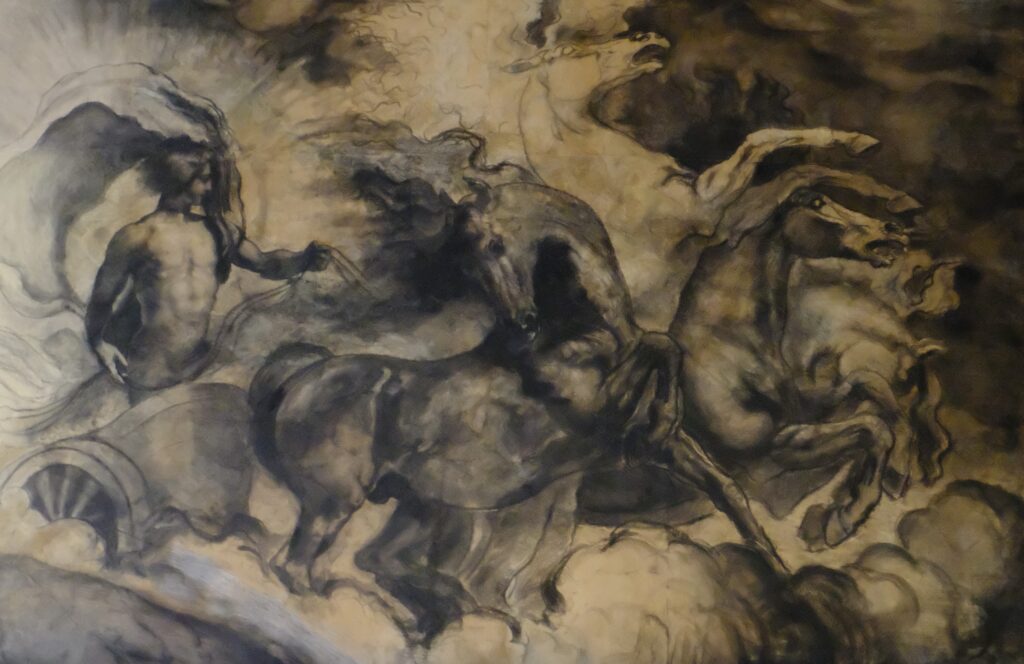
The book: Uncover the Secrets of Château Laurens…
That exploration led Jean-Louis to write a novel, “In the Ether of Château Laurens,” a work that delves into the occult undertones of Emmanuel’s life and his relationship with the villa. Set in October 1959, the story imagines an elderly Emmanuel, now a man haunted by his past, confronting a flood of fragmented memories within the very walls he created. In the novel, the château becomes a character in its own right—a place where the invisible is invited to manifest, where shadows take on form, and where a tragic choir seems to echo Emmanuel’s own words. It is a tale of disorientation and revelation, of a man who built a home only to find himself lost within it. While the novel remains untranslated into English, its themes are universal: the search for meaning, the power of memory, and the thin veil between the real and the otherworldly.
The allure of Château Laurens lies not just in its beauty, but in the questions it raises. What drove Emmanuel to create such a place? Was it a desire to escape the mundanity of the world, or was it something deeper—a need to connect with forces beyond our understanding? These questions took on a new dimension for Jean-Louis Vassallucci when he first visited the château in the summer of 2023, shortly after it opened its doors to the public. Walking through its rooms, I felt a strange mix of wonder and unease, as if the walls themselves were alive with the echoes of Emmanuel’s presence. It was an experience that lingered long after I left, compelling me to explore his story further, to try and unravel the mystery of a man who seemed to live on the edge of reality.
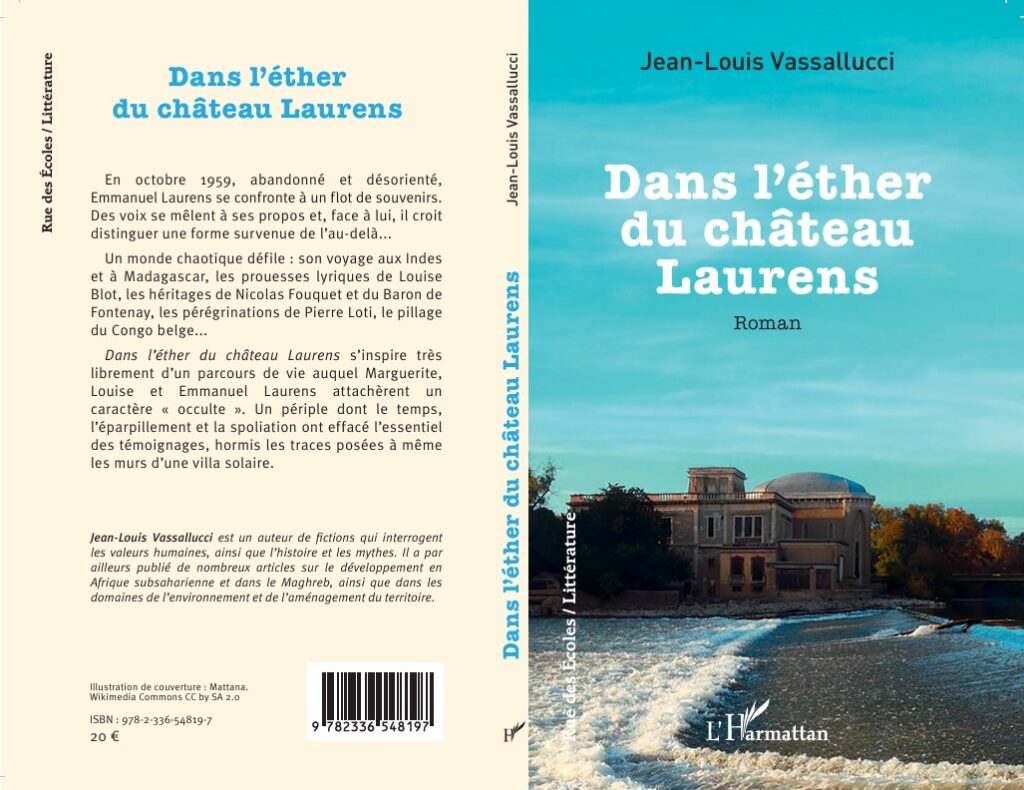

Step into a disorienting world where the past haunts the present in “Dans l’éther du château Laurens” by the insightful Jean-Louis Vassallucci. Abandoned and adrift in October 1959, Emmanuel Laurens is consumed by memories—a chaotic torrent of history that spans from voyages to India and Madagascar to the legacy of French historical figures and the shadows of colonial plunder in the Belgian Congo. This deeply atmospheric novel is freely inspired by a real-life journey steeped in “occult character,” where the truth of a forgotten solar villa is embedded in its very stone. Jean-Louis Vassallucci, a distinguished author who probes the core of human values and brings expertise in African development and environmental issues, crafts a compelling narrative that is both a historical mystery and a meditation on what remains when testimonies are scattered to the wind. If you crave a novel that blends historical depth, psychological suspense, and a search for buried truth, prepare to lose yourself in the echoes of Château Laurens.
You can purchase this book at FNAC website or Amazon.

